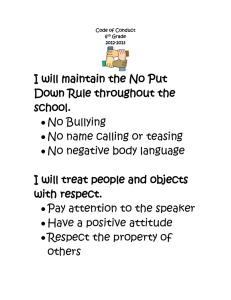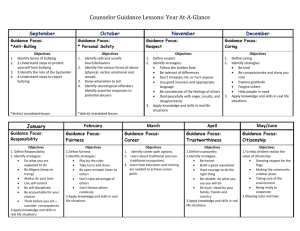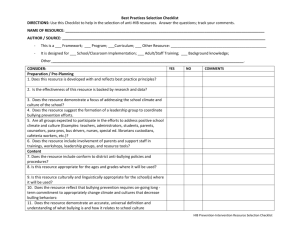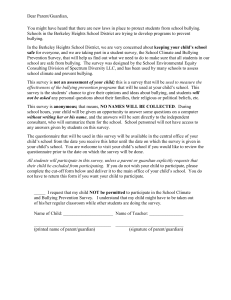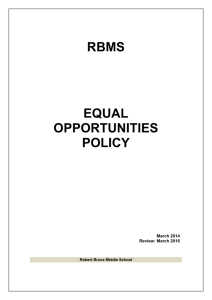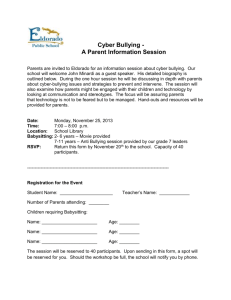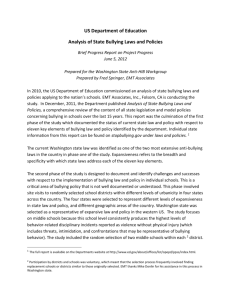Bullying Prevention and Intervention Plan 2015-16
advertisement
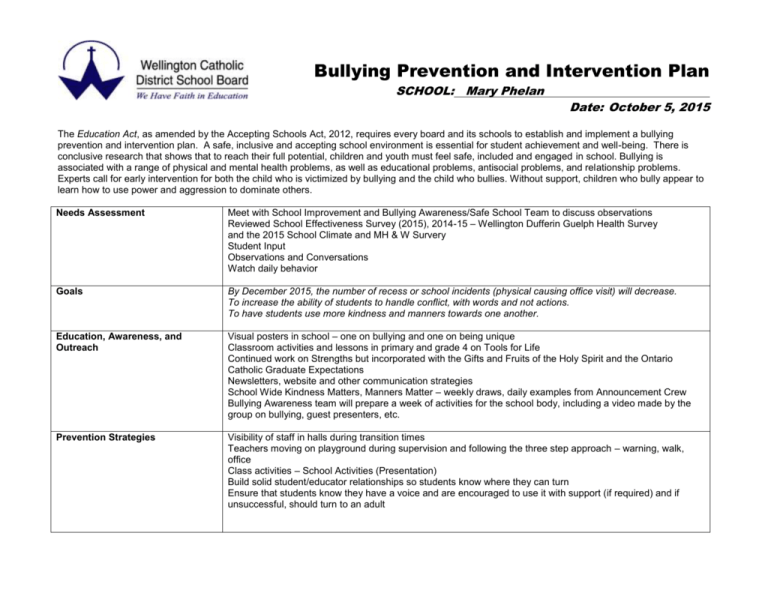
Bullying Prevention and Intervention Plan SCHOOL: Mary Phelan Date: October 5, 2015 The Education Act, as amended by the Accepting Schools Act, 2012, requires every board and its schools to establish and implement a bullying prevention and intervention plan. A safe, inclusive and accepting school environment is essential for student achievement and well-being. There is conclusive research that shows that to reach their full potential, children and youth must feel safe, included and engaged in school. Bullying is associated with a range of physical and mental health problems, as well as educational problems, antisocial problems, and relationship problems. Experts call for early intervention for both the child who is victimized by bullying and the child who bullies. Without support, children who bully appear to learn how to use power and aggression to dominate others. Needs Assessment Meet with School Improvement and Bullying Awareness/Safe School Team to discuss observations Reviewed School Effectiveness Survey (2015), 2014-15 – Wellington Dufferin Guelph Health Survey and the 2015 School Climate and MH & W Survery Student Input Observations and Conversations Watch daily behavior Goals By December 2015, the number of recess or school incidents (physical causing office visit) will decrease. To increase the ability of students to handle conflict, with words and not actions. To have students use more kindness and manners towards one another. Education, Awareness, and Outreach Visual posters in school – one on bullying and one on being unique Classroom activities and lessons in primary and grade 4 on Tools for Life Continued work on Strengths but incorporated with the Gifts and Fruits of the Holy Spirit and the Ontario Catholic Graduate Expectations Newsletters, website and other communication strategies School Wide Kindness Matters, Manners Matter – weekly draws, daily examples from Announcement Crew Bullying Awareness team will prepare a week of activities for the school body, including a video made by the group on bullying, guest presenters, etc. Prevention Strategies Visibility of staff in halls during transition times Teachers moving on playground during supervision and following the three step approach – warning, walk, office Class activities – School Activities (Presentation) Build solid student/educator relationships so students know where they can turn Ensure that students know they have a voice and are encouraged to use it with support (if required) and if unsuccessful, should turn to an adult Intervention and Support Strategies Monitoring Evaluation Using the Kindness Matters, Manner Matter school initiative Daily announcements – reminders and examples of kindness or manners Use of the Balanced Day to help reduce school yard concerns Use of CYW for small groups if required Use of Restorative Justice Techniques to help solve concerns and educate the students Future School Climate Survey Office referrals – is there an increase or decrease, why or why not Recess incidents; Anecdotal observations Safe Schools/Bullying Awareness Team Staff Input Ongoing; PLAN—ACT—OBSERVE—REFLECT
